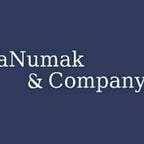How the Future Internet Will Change the World: WEB 3.0
In 2021, brand–new technical terms entered our lives. Cryptocurrencies have become more involved in investments. The Metaverse universe expanded, even land sales began. What makes all this possible is WEB 3.0, the internet of the future.
The Power of the Internet is in the Hands of the User: WEB 3.0
The main idea behind the “third version” of the internet, according to its proponents, is to bring together various Blockchain technologies (Cryptocurrency, NFTs, etc.) to create an internet network that is less dependent on the five big tech companies.
Like other trendy internet terms like “Metaverse” and even “Artificial Intelligence,” WEB 3.0 has caused quite a stir in some circles even though it doesn’t exist yet. Still, just like these technologies, billions of dollars are spent to make them a reality.
Can WEB 3.0 Decentralize The Internet?
It’s possible that getting regulated to compete against big tech companies or make those companies more accountable for mistakes will make the internet better. In this context, a decentralized network is a definite plus.
For artists, musicians, and other creators, it’s also possible that a direct–consumer relationship is better than, for example, Spotify, which has been criticized for not paying artists enough. Similar issues exist with Instagram and Reddit, both hubs where artwork is shared without attribution or payment to the artist, or TikTok, where black creators do not receive royalties for their dances.
For some artists, NFTs are a way to monetize digital art. Copyrights can be placed directly inside the artwork, so the producer gets a share every time the artwork is sold.
“This gives strength to the manufacturer,” said Chris Torres, creator of Nyan Cat, who recently sold the image as an NFT.
But WEB 3.0 has not come close to this goal, and the existence of such a need is questionable. Musicians can be paid relatively by selling physical media and artists through commissions. Blockchain is not inherently necessary, except in a world where free digital services have become the norm or at least free access to digital services.
NFTs (immutable tokens) are an excellent example of WEB 3.0 advocates’ ideas becoming a reality. These tokens are essentially digital receipts for online artworks. Users only have the ticket, not the painting itself.
NFT buyers have had well–documented difficulties retaining their purchases, such as the disappearance of pages on OpenSea, one of the largest NFT markets. In addition, ownership of NFT is centrally managed, not by the user, but by a new central authority.
What Are the Risks of WEB 3.0?
The future of WEB 3.0 is connected with the increasing digitization of our lives and even the metaverse, depending on the level of development technology companies have made; In this way, besides the real world, a virtual world with its economy and digital goods exists.
Blockchain, NFTs, and other technologies could lead to digital landlordism. Currently, digital real estate is being sold to millions in preparation for a future that doesn’t exist yet.
This is what many critics of WEB 3.0 fear: Power passed into the hands of a new group of administrators rather than a decentralized internet.
When introducing the metaverse, Meta said, “Just like the internet, there is a metaverse with or without Facebook. It won’t be built overnight,” and it won’t be built by a single company. But the billion–dollar tech giant, overtaken by Apple and Google in WEB 3.0 hardware competition, is keen to place itself at the center of what it believes is the future of the internet.
Click for more information on this topic;
